JET alum Lucia Brea interviewed by NY Public Library Blog about JET Program
The New York Public Library Blog recently interviewed JET alum Lucia Brea (Fukui-ken) about her experience on the JET Program:
STUFF FOR THE TEEN AGE, THE TICKETLESS TRAVELER
Think Japan is all Manga, Sushi, and Pocky Sticks?
by Rabecca Hoffman, Kingsbridge Library
March 21, 2013
Harajuku? Geisha? Robots? Awesome! Japanese culture has been an obsession of mine for a while now, as well as for the teenagers at my branch, so when we recently had the opportunity to invite Lucia Brea, Fukui Friendship Ambassador, to stop by and talk to the Kingsbridge Library’s Teen Advisory Group, I jumped at the opportunity. Lucia spent four years in Japan through the JET Program teaching English to students of all ages in the Fukui Prefecture, and I was able to sit down with her after her visit to ask her a few questions about her experience:
What is the JET program, and would you recommend it for other people? Are there other ways to go about living in Japan as a foreigner?
The JET Programme stands for Japan Exchange and Teaching Programme, now in its 26th year, which aims to promote grass-roots international exchange between Japan and other countries. I would highly recommend it to anyone who has a passion for developing strong relationships with communities and the drive to live in Japan for an extended period of time. It is an opportunity to experience Japan and continue to enhance relationships between Japan and their home country like I did at the New York Public Library. There are many other ways to live in Japan as a foreigner, the JET Programme is one of the best…
CLICK HERE to read the full article on the New York Public Library site.
JQ Magazine: JQ&A with JUSTE Program Participant Saiko Goto
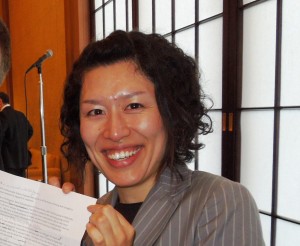
“In Minamisanriku, the local government wanted to keep the shiyakusho (city hall) as a memorial for the tsunami, but people who lost family there disagreed. Finally, the building was demolished recently. It reminded us of sad stories and memories of people who escaped to city hall during the tsunami.” (Courtesy of Saiko Goto)
By Fernando Rojas (Fukui-ken, 2008-10) for JQ magazine. A resident of Teaneck, New Jersey, Fernando was JHS ALT in Fukui prefecture, home of the echizen-gani, a city named Obama, the Fukuisaurus, and nuclear power plants. While in Japan, he picked up shuji (Japanese calligraphy) as his hobby and continues to practice today. He is currently a fellowships associate for the Social Science Research Council’s Abe Fellowship Program in Brooklyn and co-representative for the JETAA New Jersey subchapter.
Hailing from Tome City in Miyagi Prefecture, Saiko Goto was a recent JUSTE Program participant at Rutgers University in New Jersey. Informally called the “Reverse JET Program,” the Japan–U.S. Training and Exchange Program for Language Teachers allows Japanese Teachers of English (JTEs) from all over Japan to take courses in ESL teaching at U.S. universities.
Goto received her teaching license from Gunma Prefecture Women’s University, where she majored in English. She currently teaches at Sakuma Junior High School and has taught English for eight years. Before returning to Japan in January, Goto spoke with JQ about JUSTE and the ongoing impact of the March 11 earthquake and tsunami on her school.
How are teachers selected to participate in the JUSTE program?
Teachers are selected according to their prefectures. In some prefectures, teachers have to apply for the program. In other prefectures, teachers are picked by the board of education. In my case, I was recommended by my principal to the Tome City Board of Education and selected by the Miyagi Prefecture Board of Education.
Have you found the JUSTE program beneficial? In what ways has the program helped you?
Being on JUSTE has been very beneficial. I have met and talked with many people from different countries, as well as learned a lot from them through English. I have also thought more about my teaching and the importance of learning English. The program has also helped me to create more effective activities. I made many activities with other JUSTE members and we will use them in my classes.
Would you recommend the program to other JTEs in Japan?
Definitely. By participating in the program, you can have many chances for meeting people and learn a lot. I visited a former ALT during the winter vacation and experienced life in Arkansas with her and her family. I also became friends with other JUSTE participants. We will share our list of activities with each other online and keep in touch.
JQ Magazine: JQ&A with Bruce Feiler on ‘The Secrets of Happy Families’
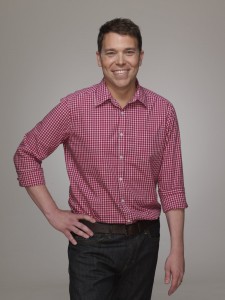
“One big idea in my book is that families should adapt all the time. The single best thing we’ve done is to add a weekly family meeting. We ask three questions, based on a popular program called ‘agile families.’ And no surprise: that idea was born in Japan in the culture of real-time change.” (Courtesy of HarperCollins Publishers)
By Sharona Moskowitz (Fukuoka-ken, 2000-01) for JQ magazine. Sharona is interested in fresh, new voices in fiction and creative nonfiction.
New York Times bestselling author and columnist Bruce Feiler (Tochigi-ken, 1987-88) has written a range of books dealing with topics as varied as life in Japan (depicted in 1991’s Learning to Bow), religion, and his own diagnosis with cancer.
His latest book, The Secrets of Happy Families, is a playbook for today’s family with tips and advice for increasing overall happiness and strengthening the family unit. Unlike other family-related books, Feiler does not advocate one particular method or philosophy over another; rather, he has done a thorough investigation of what happy families have in common and offers readers a slice of the pie.
In this exclusive interview, Feiler shares how his experience in Japan has given him insight into family life across cultures, as well as his take on the modern family’s trials and tribulations.
It seems the book market is already glutted with all sorts of self-help books about families. What sets your book apart and why do you feel that it is particularly timely?
In many ways, I was motivated by the deluge of self-help books. They’re boring, tried, and out of fresh ideas. As a parent, I was completely frustrated and had tons of questions about how to make my family function more effectively, and the only books out there were from “family experts.” Meanwhile, in every other arena of contemporary life—from Silicon Valley to elite peace negotiators, from championship sports teams to the Green Berets—there are proven new ways to make teams and groups run more smoothly. I wanted to know what those people were doing with their own families, then test their ideas with mine. Not every idea worked. That’s why I put over 200 new ones in the book, because what clicks with your family may be different from what clicked with mine. But my hope is that if you take three ideas, you’ll have a happier family in a week.
In the chapter about the agile manifesto, you talk about the importance of “being part of the family team.” In writing about the importance of teamwork within the family, were you inspired at all by your experience in Japan, a culture which valorizes the group above all else?
I think it may be more the other way around, in that I was attracted to Japan because I’ve always been interested in tight groups and well-run teams. At the time I lived in Japan, in the late 1980s, Americans still believed that the individual mattered above all else. But one thing we’ve learned from the Internet is that we all have a natural inclination toward groups, social networks, and other gatherings of people. The first generation of happiness research has shown us that relationships matter above all else. Happiness is other people. And the people who matter most to us are our family. Yet there have been almost no books that tell us how to do that.
Are there other cultural practices you observed in your time in Japan which you believe could benefit American families?
One I learned while in Japan is that being part of a group doesn’t just happen. Japanese schools, in particular, work on it. I remember a school trip I went on where classes were divided into small groups. The number one rule was, don’t be late. The number two rule was, only one person in each group was allowed to have a watch. Guess what! You better stick together. Having a close family doesn’t just happen, either—you have to work on it. Fortunately, there are lots of new ideas out there to do that, which I’ve tried to gather.
JET Alum Artist Beat: Joshua Powell, Book Designer and Illustrator
******* JET Alum Artist Beat is a periodic feature organized by Jessica Sattell (Fukuoka-ken, 2007-2008) intending to share the wide scope of creative work that JET alumni are pursuing as artists, designers, and/or craftspeople. She is interested in interviewing and providing exposure for artists and arts professionals, and welcomes links to online portfolios, stores and businesses. Feel free to email Jessica at hello (dot) jessicasattell (at) gmail (dot) com with suggestions.
Joshua Powell (Saitama-ken, 2005-2007) is a Seattle-based book designer and illustrator. He has designed and produced a number of books for Japan-focused (and JET alum run) independent publisher Chin Music Press, including Shiro: Wit, Wisdom and Recipes from a Sushi Pioneer, which was a 2011 Washington State Book Award Finalist and won First Place in the Quality Paperback category at the 2012 New York Book Show. NPR called another title that he designed, Oh! a mystery of mono no aware, “a triumphant kick in the pants for anyone who doubts the future of paper-and-ink books.”
Josh graciously took the time to discuss his JET tenure and how his experiences in Japan influence his design sensibilities.
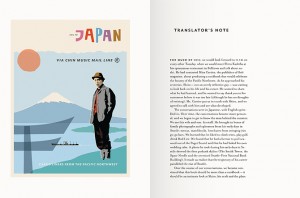
A spread from “Shiro: Wit, Wisdom and Recipes from a Sushi Pioneer” featuring one of Joshua’s original illustrations (image courtesy of Joshua Powell)
Tell us a little about your background. How did you decide to apply to JET and live in Japan?
From the ages of 9-17 I practiced traditional Japanese martial arts, training under a Japanese teacher who had relocated to my home state of Virginia. His two sons as well as other Japanese sensei would visit and teach at the dojo for extended periods of time.
When I was fifteen I was lucky enough to travel to Japan for a karate competition. I never really sought out Japanese culture. I just kind of fell into marital arts and by virtue of that, Japan became a pretty central part of my childhood and teenage years. The trip I took to Japan lasted two weeks, and after it was over I always had this feeling that I wanted to get back and live there – I wondered what it would be like to have things become more familiar, to feel comfortable there. It was a thought that just stuck in the back of my mind, and then when I found out about the JET Program years later, I didn’t think twice about applying.
Were there any experiences while you were on JET that you found particularly meaningful or memorable?
My two years on JET are very important to me – a consistently rewarding and meaningful time. There are many things that contributed to the experience being so great, but it really came down to the people I met and the places I visited while in Japan. I felt extremely lucky with the school I worked at – Omiya High School in Saitama-ken. I had great co-workers, some of whom I considered close friends, and so many enthusiastic and positive students. Outside of work I had some really great friends, other JETs as well as Japanese friends who I mainly met while traveling. There were so many opportunities to get out and explore the country. Unlike many JETs, I only left the country once during my two years. I almost exclusively spent my time off exploring Japan. Coming from the U.S., the ability and ease with which I could explore the country never ceased to amaze me – just hop on a train and you’re off on a new adventure.
One of the things that I came away from Japan with was the knowledge that you don’t need a lot of things to be happy. You can live in a tiny apartment and have few material possessions (no point in buying a lot of stuff when you aren’t staying somewhere permanently), but as long as there are good people in your life and you’re able to get out and experience new things, life can be very fulfilling.
As you mention in your interview with One A Day, you’re trained in printmaking. Has that influenced your work as a book designer?
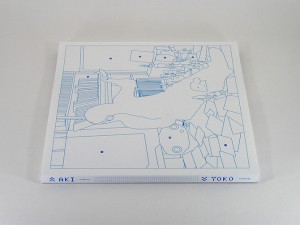
Photograph highlighting the design of “Otaku Spaces” with book jacket removed (image courtesy of Joshua Powell)
Yes. I’m mostly self-taught when it comes to design, so of course I’m building off of the visual language I learned through making art, and particularly printmaking. And of course bookmaking is a form of printmaking – making an edition of ink on paper objects. So naturally, my enthusiasm for the physical book is greatly influenced by my background in printmaking. I’ve always worked with commercial printers – none of which were in Seattle. So in a way that’s very odd, that I’m giving up the actual printing aspect of the whole process to someone else. Nonetheless, since I’m not only doing the design but also handling the production aspect of the process (preparing files, choosing papers, communicating with the printer), I still have a hand in it. If I were to print the books myself or to work closely with a local printer, Read More
JQ Magazine: JQ&A with Matthew Gillam, Senior Researcher at the Japan Local Government Center

“When you come back from Japan, people say, ‘You know Japanese, you’ve been abroad, you should be able to get a job anywhere.’ You soon realize that it doesn’t work that way. Alumni coming back should look at things you did in different light: what did you fundamentally do, and take away from that?”
By Adam Lobel (Nagano-ken, 2000-02) for JQ magazine. Last year, Adam returned to New York after 10 years in Japan, where he researched satoyama (traditional landscape of Japan) as a master’s student, and collaborated with Japanese policymakers in science and technology while working at a think tank. Adam currently helps manage his family’s business, a land use law firm in Manhattan, and looks forward to contributing to New York’s green building movement.
Born and raised in Marshalltown, Iowa, Matthew Gillam was hooked on Japan after visiting when he was 17. After college, he lived in Japan for eight years, and then returned to the U.S., where he completed a master’s at Columbia’s School of International and Public Affairs (SIPA). Matt has spent the past 14 years as a researcher at the Japan Local Government Center (JLGC), discovering and sharing best practices from local governments in North America with his colleagues in New York and Japan.
By encouraging organizational discipline and providing tools to build strong networks, Matt has helped strengthen the JET Alumni Association, thus helping thousands of JET participants smoothly transition to life back home. He promotes JETAA’s role an important stakeholder in productive business and cultural relationships with Japanese localities, helping broaden the JET Program’s mission long after participants return home.
In this thought-provoking interview, JQ spoke with Gillam about what it was like to study Japanese at the University of Iowa in the 1980s, life in Japan before the existence of JET, and the kindness and hard work JET families displayed in the aftermath of 3/11. He emphasizes that JET—an experiment in grassroots internationalization—has changed how the world thinks about Japan. Matt gave this interview before heading to Japan, where he spent four days with It’s Not Just Mud (INJM), a non-profit volunteer organization based in Ishinomaki.
How did you become interested in Japan?
I was exposed to Japan when I was seven: my sister spent the summer of 1969 as an exchange student in Yamanashi. She fell in love with Japan, and told us about it after returning home. Eventually she went to live in Japan, teaching English at Sony Language Labs. In 1979, just before my senior year of high school, my mother and I went to visit. Before that trip, I never liked to travel. Suddenly, I was in a completely new place. I realized there was a bigger world, and it was interesting. That’s when I fell in love with Japan, its people, food, art and architecture.
After my sister returned to the U.S., she placed a Japanese student in a nearby town. I fell in love with that student, who eventually became my wife. In college I flunked out of forestry, my first major and, looking for something new, got into Japanese language. I did a year abroad at Kansai Gaidai in Osaka, and spent eight more years in Japan after graduating.
How did people react to your decision to study Japanese? What was Japanese study like at the University of Iowa in the 1980s?
Some people did not understand my decision to study Japanese, especially because it was a small Midwestern town. Their reaction was, “Why Japanese?” This was 1982: Japan was just beginning to emerge as a major economic rival, and Japanese culture hadn’t permeated the Midwest yet. It was a strange thing to do.
My sister understood, and my mom understood, but other family members and friends did not. In those days, some people’s reaction to Japan was still influenced by the Second World War: “These people were enemies; I am not comfortable with them.” That only got worse through the eighties with trade friction.
Study materials were primitive by today’s standards: Japanese textbooks by Prof. Eleanor Jorden, a kanji dictionary, and language lab with cassette tapes. Our professor, Thomas Rohlich (now at Smith College) started the same day I did. We had a Japanese teaching assistant from Tokyo, but most of the teachers were white men.
There were no Japanese restaurants or pop culture. Fisher Control, a company in my hometown, employed a Japanese engineer, who had relocated with his wife. At the beginning of my first year of college, there were 30 students, the biggest class they had ever had! That number slowly decreased, until there were only six or eight students by my third year. There were a couple of Japanese students on campus who became casual friends. Prof. Rohlich’s wife was from Kyoto, and she hosted a gyoza party. That was about it.
Justin’s Japan: Interview with Tera Patrick at Exxxotica Leads to ‘Happy Ending’
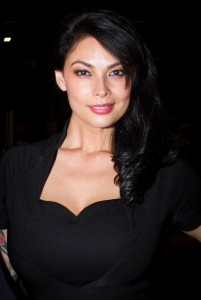
“My first modeling job at the age of 13 was in Omotesando in Tokyo. So I’ve always been obsessed with Japanese culture, and I usually spend one month of the year in Japan. I love everything about Japan.” (Courtesy of Justin Tedaldi)
By JQ magazine editor Justin Tedaldi (CIR Kobe-shi, 2001-02) for Examiner.com. Visit his Japanese culture page here for related stories.
Interview conducted by Rick Ambrosio (Ibaraki-ken, 2006-08). A staple of the JET Alumni Association of New York (JETAANY) community, Rick manages their Twitter page and is an up-for-anything writer for JQ magazine.
From porn to Playboy to parenthood, Tera Patrick describes herself these days as a “Betty Crocker Rocker Mompreneur.” Suitably following Hurricane Sandy at this year’s Exxxotica Expo in New Jersey—the nation’s biggest event devoted to love and sex—this multi-award-winning force of nature attended the three-day fest from Nov. 9-11 to press the flesh with fans and read from her best-selling autobiography, 2010’s Sinner Takes All.
But here’s something you might not know: Patrick’s been a diehard fan of Japanese culture since her days in Tokyo as a teen model. In this exclusive interview, the Montana native dishes on Harajuku girls and yakuza tats, the controversial Measure B that could forever change the adult industry, and the upcoming sequel to Sinner Takes All.
How are you enjoying Exxxotica?
I’m enjoying Exxxotica a lot—it was really important for me to come back. This is my first time at the show; I haven’t been back here since 2009. And in light of Sandy, it was really important to give back and boost morale and donate Tera items. I’m doing care packages for veterans tomorrow.
Last month you were a special guest at New York Comic Con. How did that end up happening?
You know what’s funny? I always say guys like three things: they like porn, comics and chicks. So it wasn’t too farfetched for me to be there; I actually debuted my first show at Comic Con in 2007 when I appeared in the video game Saints Row. So I’ve been in video games, I’ve had the privilege of being on Adult Swim and Aqua Teen Hunger Force, I’ve done adult. I do a lot of different things—I’m an author now. My first memoir was Sinner Takes All; my second follow-up memoir comes out February 2013.
We heard that for Halloween your outfit was a Harajuku girl. Is that true?
Yes. I’m actually very fascinated by Japanese culture. In my memoir Sinner Takes All, my first modeling job at the age of 13 was in Omotesando in Tokyo. So I’ve always been obsessed with Japanese culture, and I usually spend one month of the year in Japan.
Japan still is my favorite country to visit. I love Japanese food. I’m Thai—my mother’s from Thailand—but I love Japanese food, Japanese culture. I love everything about Japan, so I’m really excited to take my family there for the first time in December. So I’ve been a bit selfish, and I always spend a lot of time in Japan. I’ve been tattooed in Japan; I’ve only been tattooed in Japan.
For the complete interview, click here.

Maynard Plant, second from left: “I really do think it is important to learn more than one language. Not only for the obvious convenience of communication, but for the enrichment of understanding of other cultures as well. Language really is the only gateway into understanding another person’s psyche and culture.” (Courtesy of Edward Entertainment Group)
By Preston Hatfield (Yamanashi-ken, 2009-10) for JQ magazine. Preston moved from San Francisco to New York City in January 2012 and is now accepting submissions from people who want to be his friend. Abduct him from his house in the middle of the night, or find him on Facebook and ask about his JET blog in which he details his exploits and misadventures in that crazy Land of the Rising Sun we all love.
Multinational pop rockers Monkey Majik are teaming up with shamisen heroes the Yoshida Brothers, the duo known for their traditional sound and pluck, for a three-date North American tour that kicks off Nov. 14 at Manhattan’s Marlin Room at Webster Hall, followed by the Mod Club in Toronto Nov. 18 and the National Arts Centre in Ottawa Nov. 20.
Monkey Majik was founded by Maynard Plant (Aomori-ken, 1997-2000), a native of Ottawa, Canada, while he was teaching English in Sendai on the JET Program. Known for a having a fun and versatile style of music, the band first earned mainstream attention in 2006 for their singles “Fly” and “Around the World,” and have since collaborated with other Japanese groups like SEAMO, m-flo, Bennie K, and the Yoshida Brothers.
In this exclusive JQ interview, the versatile vocalist and guitarist discusses the band’s origins, his own relationship with music, and his sense of home and community in Sendai, which is still recovering from the devastation caused by the 3/11 earthquake and tsunami.
Which came first: the love of music or Japanese culture, and how has the one influenced and supported the other since you came to Japan?
I probably first took interest in Japan when I was about 10 years old or so when I visited Expo 86 in Vancouver, Canada. My interest in music also started at an early age. Most of my family is musical, so it always came natural. Certainly since arriving in Japan about 15 years ago, my musical interests have changed. The Japanese music scene is incredibly diverse and different from the Western scene. The sound is very unique and [it] has had a deep effect on our music.
It’s funny, many ALTs in Japan feel like rock stars, but you actually became a rock star. What was it like going from small time notoriety and fame at your school, to becoming famous on a national level for your musicianship?
It didn’t happen overnight, so I suppose I never took notice. It’s a lot like learning Japanese—you don’t just wake up fluent one day. Success is born out of hard work and commitment. Regardless of where you live, the same elements come into play.
How did the current band members come together? Were you friends before you started collaborating professionally? How have each of you influenced Monkey Majik’s sound, style, and group dynamic?
I put the current band together after most of the original members quit in 2000. I first called my younger brother Blaise, and within a couple of months we found Tax (Kikuchi Takuya). It was around 2005 that our original bassist Misao Urushizaka quit. We then recruited Dick (Hideki Mori). It’s difficult to say if the friendship came before membership, but one thing is certain now: we wouldn’t be doing this if we hadn’t become best friends. We have a lot of respect for each other and all [band] decisions are made together.
Justin’s Japan: Interview with ‘Manga! Manga! The World of Japanese Comics’ author Frederik L. Schodt

“I grew up overseas in several different countries, and I’ve always enjoyed different cultures. And for me, that was exactly the way Japan appeared: it was always interesting, and it still is always interesting. There’s always things to learn.” (Courtesy of Stone Bridge Press)
By JQ magazine editor Justin Tedaldi (CIR Kobe-shi, 2001-02) for Examiner.com. Visit his Japanese culture page here for related stories.
Frederik L. Schodt first traveled to Japan in 1965 as a teenager, and since the early ’80s he has written numerous books about Japanese culture both popular and obscure, including the landmark Manga! Manga! The World of Japanese Comics, the first substantial English-language work on the art form. Schodt also has translated a wealth of books and manga series (many by his late friend, the “god of comics” Osamu Tezuka), and in 2009 he was awarded the Order of the Rising Sun, Gold Rays with Rosette for his contribution to the introduction and promotion of Japanese contemporary popular culture.
Out Nov. 13 is his newest book, Professor Risley and the Imperial Japanese Troupe, the true story of “Professor” Richard Risley Carlisle, an American who introduced the Western circus to Japan in 1864, and in turn gave many Americans their first glimpse of the East when he took his “Imperial Japanese Troupe” of acrobats and jugglers on a triumphant tour of North America and Europe, stirring a fascination with all things Japanese that, Schodt says, eventually led to today’s boom in manga and anime.
In part one of this exclusive, wide-ranging interview, I spoke with Schodt about his fascination with the late 19th century, his relationship with contemporary pop culture icons like George Lucas, and the story behind his middle initial, which is colorfully connected to the events of the film Argo.
It’s been more than five years since the release of your last book, The Astro Boy Essays. What else have you been up to since then?
I’ve actually gone through this and done some rough calculations, but it seems to take me about five years between books. I’ve been doing this same sort of thing that I always do, which is a mix of writing books and translating and then also working as a conference interpreter. For different periods, the weight and the ratio changes, but the mix is pretty much the same. And I’ve been working on the book of Professor Risley and the Imperial Japanese Troupe, I guess, for the last two or three years doing research. But it’s been a lot of fun, I have to say—it’s been one of the most fun books I’ve worked on in a long time.
What are some developments in manga/anime/Japanese pop culture in the U.S. that you feel has moved in a positive direction? At the same time, what things are you a bit critical of in the way they were handled?
I think it’s wonderful that a popular culture from another country such as Japan developed such a large fanbase in the United States, and that was a real surprise to me. I always hoped that people would take more notice in Japanese manga and anime, because I thought they were such an interesting manifestation of popular culture that had been long overlooked in the United States. But I never imagined that both of those entertainment media would become so big and so entrenched in the United States in terms of the fanbase, so that’s been wonderful to see.
It seems like the biggest development in recent years has been the cosplay phenomenon—that’s become a real part of the lingo here now.
That’s right. And I think cosplay in the United States is a little different, and in fact I think the whole fandom in the United States has assumed sort of American characteristics, so it’s developing on its own in new directions, and it’s kind of wonderful to see. I go to some of the larger cons every once in a while, and I really enjoy seeing how young people are interpreting this cultural phenomenon developed in Japan, although I have to say that cosplay is really indirectly inspired by the masquerades and the costume competitions that started in the United States in the sci-fi comic book community. So it’s very interesting. It’s this sort of cultural interchange that I’ve always been fascinated by where you have these two countries that are kind of reflecting each other and sending influences back and forth to each other, and interpreting a phenomenon in slightly different ways.
For the complete interview, click here.
JQ Magazine: JQ&A with Jenn Doane of the Hiroshima Ange Violet
![20Jennifer[1]](http://jetwit.com/wordpress/wp-content/uploads/2012/10/20Jennifer11.jpg)
“On JET I was deeply involved in both my town and my prefecture, and in turn developed close relationships with both foreigners and Japanese people. Seattle is a diverse place, but I don’t think I would ever have had such a dynamic and interesting life outside of my day job!”
Seattle native Jenn Doane (Shimane-ken, 2010-12) has played soccer since she was eight years old. Having been a four-year starter on her high school varsity team, a three-year starter in college, and selected to play for the Olympic Development Program, she is now the first American to play professional soccer on a Japanese team, the Hiroshima Ange Violet. JQ learned all about her path to the team in this exclusive interview.
How did you become interested in Japan and the JET Program?
I have known about the JET Program since I was young, actually—my parents were both very involved in the Japanese community in Seattle: My mother was the executive director of the Japan America Society and the Japanese American Chamber of Commerce, and my dad served as president of the Society as well, and I think they have even been asked to be interviewers for prospective JET candidates. However, as any teenager would, I wasn’t interested in anything my parents were! I am three-fourths Japanese and one-fourth Caucasian (my mom is full, my dad is half, and both were born and raised in America).
I wasn’t necessarily ashamed of being Japanese, but I grew up in a mostly Caucasian suburb–and while I don’t think I was ever really picked on or anything, being Japanese wasn’t something I was overly proud of! You should have seen the reactions of my friends when I sometimes brought onigiri and kamaboko in my school lunch!
I was planning to be a Spanish major in college until my junior year when I decided to switch my focus to Japanese and study abroad in Osaka. I think I finally came around and got more curious about my heritage and the Japanese language. Many students from my college (Whitman) do the JET Program, and after a wonderful study abroad experience and hearing from all the raving alums, I thought it would be the perfect thing to do after graduating. So, here I am (or rather, there I was…).
I noticed you were a violinist for the Whitman Women’s Symphony. Any plans to continue with the violin in Japan?
Unfortunately, I have not touched a violin in a long time—however, I really have a passion for music and have found other ways to realize the musician in me! I joined a singing group in the countryside (we sing all the Glee hits) and have also been learning guitar. If I had easier access to a violin, I would definitely love to get back into it!
If you don’t mind sharing, what was it like to be on JET and teach at schools during the time of the disasters last year?
Compared to the JETs and teachers actually living in Tohoku, I can’t say that things were dramatically different. However, there was a kind of solemnness in the air after what happened— lots of moments of silence, and donations boxes all around school and town. One of my college friends is a JET in Miyagi Prefecture and we couldn’t get a hold of him for two weeks after the earthquake…it was terrifying. Thankfully, he had been at a relief shelter without Internet or phone access.
I also had the opportunity to volunteer in one of the hardest hit towns of Tohoku (Kesennuma) about six months after the tsunami, just helping sort debris and cleaning ruined houses, and it was such a moving experience—I met some incredibly strong and inspiring people, people who lost loves ones, everything they owned, or both.
JQ Magazine: JQ&A with Paige Cottingham-Streater, Executive Director of the Japan U.S.-Friendship Commission
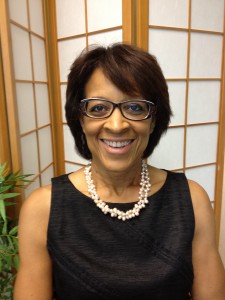
“It’s impressive to see not only the countries and communities from which JET alumni herald, but also the ways in which they contribute to the program during and after their involvement. The Japanese government should certainly be pleased with the return on its investment in introducing so many people to Japan.” (Courtesy of JUSFC)
By Renay Loper (Iwate-ken, 2006-07) for JQ magazine. Renay is a freelance writer and associate program officer at the Japan Foundation Center for Global Partnership. Visit her blog at Atlas in Her Hand.
Paige Cottingham-Streater (Mie-ken, 1988-89) is a co-founder of the JET Alumni Association and executive director of both the Japan-U.S. Friendship Commission (JUSFC), a federal agency that provides grants for research, training and exchange with Japan, and the United States-Japan Conference on Cultural Interchange (CULCON), a binational advisory panel to the U.S. and Japanese governments
Cottingham-Streater previously served as deputy executive director of the Maureen and Mike Mansfield Foundation, where she worked for 16 years. In 2004, she received the Japan Foreign Minister’s Commendation in recognition of her longstanding work to strengthen U.S.-Japan relations. The award commemorated the 150th anniversary of the Treaty of Peace and Amity between Japan and the United States.
A regular on the U.S.-Japan relations conference circuit in the United States and abroad, Cottingham-Streater spoke with JQ recently to discuss her rich career, advice for today’s JETs, and thoughts about the future between America and Japan.
What initially sparked your interest in Japan?
My father served in the Korean War and spent time in Japan, so I was initially introduced through his recollections of the history and phrases he learned. In 1970, I was an elementary school student and Japan was hosting the World Exposition in Osaka, so my family traveled [there] to attend the expo and experience Japanese culture. As a young person, I was interested in the similarities and differences between Japan and the U.S. We arrived in Tokyo and saw department stores and familiar automobiles, but there were distinct and subtle differences, such as language spoken and [the] size of automobiles. I returned home wanting to learn more, so in high school I took an Asian Studies class. As a freshman in college, I took another Asian studies class and then more Japanese studies classes [ultimately leading to a] double major in Asian Studies and Government, with the goal of becoming a lawyer who could build a career involving Japan.
JETAA began in 1989. What was your personal motivation for creating the organization?
I’d had a wonderful and rewarding year in Japan that I didn’t want to end completely when I returned to the U.S. I also wanted to find some small way to repay the generosity I had received from the community and country that hosted me. Before departing Japan, several of us who were not renewing met to explore ways in which we could stay connected with each other and support the program by recruiting others and sharing information about Japan. There were a handful of us who were returning to different parts of the United States so we decided Washington, D.C. should be the central focus. When I returned to D.C., I contacted the Japanese embassy about the possibility of working with them as well as the JET office to hold meetings and build a mailing list.
How many other people did you co-found it with?
I found four others in Washington, D.C. who had also recently returned. California, New York, and Philadelphia quickly grew shortly thereafter.
Where would you like to see JETAA go?
I’d like to see JETAA build an infrastructure and organize itself in a way that allows the organization to operate as a single entity, with chapters serving the unique needs of local communities in the U.S. and overseas.
Justin’s Japan: Interview with ‘Speed Tribes’ Author/JET Alum Karl Taro Greenfeld
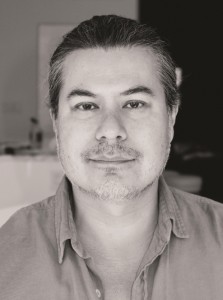
“From being born in Kobe and spending time in Japan as a child, I had a decent feel for Japanese culture and even a little bit of the language. But what best prepared me for the JET Program was living in Paris during my junior year in college; that familiarized me with living in a foreign country and how one had to adapt, especially back then in pre-Internet times.” (Esmee Greenfeld)
By JQ magazine editor Justin Tedaldi (CIR Kobe-shi, 2001-02) for Examiner.com. Visit his Japanese culture page here for related stories.
Born in Kobe and raised in America, Karl Taro Greenfeld (Kanagawa-ken, 1988-89) is the author of six books, and over the past two decades his writing has graced everything from the Paris Review to Playboy to Time Asia (where he served as editor for two years). His first book was Speed Tribes: Days and Nights with Japan’s Next Generation, a gritty, true-life portrait of Tokyo’s urban underground. Published in 1994, it exposed a fascinating side of post-bubble Japan rarely seen (or reported by) foreigners.
Now living in Tribeca with his wife and two daughters, Greenfeld has recently penned his debut novel, Triburbia, which once again finds a muse in his current milieu. The New York Times calls it “an artful and casually cohesive work of fiction imbued with anthropological insight,” and Greenfeld will be appearing at an author event at (where else?) Barnes & Noble Tribeca on Sept. 5.
In this exclusive interview, I spoke with Greenfeld about his early days in Japan during its economic peak, his highlights as a journalist covering the nation’s subculture, and a never-before-told story about the fate of a planned Japanese-language release of Speed Tribes.
Triburbia is a story about Tribeca fathers at the end of the last decade facing a changing neighborhood, which is similar to your own life. What made you to decide to write a novel about this?
I was living in Tribeca and then we moved to Pacific Palisades, California for a few years, and that caused me to look back at Tribeca and think about that time and place. It’s very similar to how I wrote Speed Tribes after moving from Japan back to the U.S. Somehow, when I am living in a place the intensity of experience makes it hard to write about. But with the perspective of distance, ideas come into focus and I can get a better idea of what I want to say about a place.
At 23, you served on the JET Program in Kanagawa Prefecture from 1988-89. How did JET come on your radar, and what kinds of jobs did you have before that?
I don’t remember how I heard about JET. I think it was something my mother found out about and passed on to me through her contacts at the Japanese Consulate in Los Angeles. Before that I was working in a clothing store and was just starting to write for magazines. I’d had small stories in the New York Times and Harper’s Bazaar and I already knew that’s what I wanted to do. But then I was accepted into the JET Program, which turned out to be a lucky break because it got me to Japan, though further from Tokyo than I would have liked.
You were born in Kobe, grew up in Los Angeles and went to college in New York. How did this exposure to different cultures and lifestyles prepare you for your time on JET?
From being born in Kobe and spending time in Japan as a child, I had a decent feel for Japanese culture and even a little bit of the language. But what best prepared me for the JET Program was living in Paris during my junior year in college; that familiarized me with living in a foreign country and how one had to adapt, especially back then in pre-Internet times. I remember getting theJapan Times every day and that was my only connection to what was going on in America, a few baseball results—they didn’t print box scores—and maybe a few AP stories picked up about Bush or Dukakis. That was it!
How about being perceived as “half-Japanese” or “Asian” during your time in Kanagawa?
I think being half-Japanese was actually a disadvantage in the JET Program. For one thing, when Japanese kids hear they are getting a foreign teacher, they want a foreign teacher: A tall, strapping, blonde, preferably female, would be ideal. When I showed up, looking Japanese, I think it was a little bit of a disappointment. Never mind how lousy a teacher I actually was.
What were the biggest life lessons you picked up from JET? How about from that first year from working in Japan?
I learned a few things: For one, I learned that I shouldn’t confuse loneliness and happiness. That sometimes, I could be very lonely, and for the first six months or so in Kugenuma, where I lived in Kanagawa, I was intensely lonely. But I was strangely productive. I wrote a novel (never published), read a few hundred books, and had a lot of time to think about writing and what I wanted to say. It was the first time in my life that I wrote every day for a year.
For the complete interview, click here.
Justin’s Japan: Interview with Minoru Niihara of Loudness on ‘Eve to Dawn’
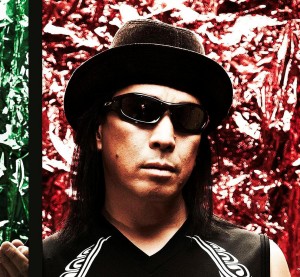
“Compared to the ‘80s, record labels, media and music industry are totally different now, but rock bands’ success has been always written on the stage. I believe that rock bands should live on the stage and that’s the most legitimate way to do our job.” (Courtesy of FrostByte Media)
By JQ magazine editor Justin Tedaldi (CIR Kobe-shi, 2001-02) for Examiner.com. Visit his Japanese culture page here for related stories.
In the beginning, there was Loudness. Formed in 1981 in Osaka, the Japanese quartet started out as a successful hard rock and metal outfit and expanded their fanbase to America four years later with an international album deal and hit single “Crazy Night.”
History is now repeating itself. Twenty-five years after the release of original frontman Minoru Niihara’s last album with the group during their ’80s heyday, Loudness has now inked a new global record deal with FrostByte Media to reintroduce them to a new audience outside of Japan. First up is the newly released studio album Eve to Dawn—their 26th overall—and a fall North American tour is in the works.
In this exclusiveinterview, I caught up Loudness’ charismatic vocalist to discuss opening for Mötley Crüe at Madison Square Garden, the similarities between Japanese and American groupies, and which heavy metal movie makes him cry.
Eve to Dawn was released last year in Japan. Are there any differences between the original version and the American release?
I don’t have a copy here yet, but I don’t think there’s any difference between the two.
Are there any plans for your new label to release your most recent album, 2012, which also just came out inJapan?
It’ll be released next year.
For those unfamiliar with the band, how would you describe Loudness’ sound and lyrical themes?
It’s a very unique hard, heavy and explosive, Asian metal rock band. The most recent album has lots of songs with positive and encouraging messages because of the quake in 2011.
What made you want to become a rock singer?
When I was about 15, there is a cool singer named Masaki Ueda in Osaka, and because I really liked him, I got interested in singing. After a while I found joy in singing when I learned that people loved to listen to me sing. I became a pro, one synchronicity after another.
In a recent interview with New York’s own Chopsticks magazine, the band mentioned that its main goal now is to become a success in the U.S. What plans do you have to achieve this?
There is nothing but touring and doing lots of live performances, I guess. I believe that rock bands should live on the stage and that’s the most legitimate way to do our job. That’s our policy!
For the complete story, click here.
JQ Magazine: JQ&A with Darryl Wharton-Rigby on ‘Don Doko Don: The Yamakiya Taiko Drum Club Project’
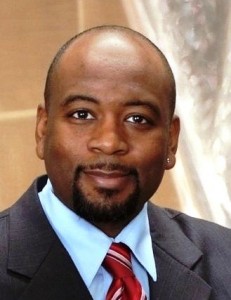
“This story is about the resiliency of community; how a community comes together in times of crisis. It’s a story about our shared human experience. It’s in some ways my own story, as my family still lives in Fukushima as well.”
By Nichole L. Knight (Shiga-ken, 2007-09) for JQ magazine. Originally from Waterbury, Connecticut, Nichole became active with the JET Alumni Association of New York even before moving to the city. Since returning from Japan, she’s played with the University of Connecticut Taiko Team, and trained with Soh Daiko, the East Coast’s oldest taiko group.
Darryl Wharton-Rigby (Fukushima-ken, 2005-07) is a playwright, poet, professor and filmmaker, who hails from Baltimore, Maryland. He has written for NBC, MTV, and BET. He lectures for Morgan State University’s Screenwriting and Animation Program, and is in the process of writing three books. Married with three children, he splits his time between Baltimore, Los Angeles, and Japan.
From 2005 to 2007, while teaching English in Kawamata-machi in Fukushima Prefecture through the JET Program, Wharton-Rigby was introduced to the talented members of the Yamakiya Taiko Club, a local community group which he would soon join. He began filming their story in 2006, but was inspired to continue after the group was misplaced in the aftermath of the 2011 tsunami and ensuing Fukushima Dai-Ichi Nuclear Power Plant area evacuations.
Of the documentary, now titled Don Doko Don: The Yamakiya Taiko Drum Club Project, Wharton-Rigby says, “…[T]his very well may be my most ambitious project. I never imagined my journey would bring me to [a] project with such an international scope and [is] profoundly personal on so many levels.” As the film’s writer, director and producer, he has unveiled an ambitious Kickstarter campaign to fund the project that closes July 11. In this exclusive interview, JQ caught up with Wharton-Rigby to discuss the origins of the film, the significance of Yamakiya on its devastated community, and the troupe’s international highlights so far.
Tell us a little about the Yamakiya Taiko Club and how you first came to know about it.
When I was a JET in Kawamata, I had to go to the Yamakiya District high in the mountains to teach at the elementary, junior high, and kindergarten schools. I met Megumi Endo, who was a school worker and head of the group at Yamakiya Elementary School. She invited me to play taiko drums with the Yamakiya Taiko Club and I was hooked. I loved the sound and power of the drums. There are three teams: Kodama, the beginning students; Suzaku, the intermediate students; and Yamazaru, the experienced members. I practiced with the younger members of Kodoma.
What inspired you to start making a documentary about them?
I started shooting footage of the group after breaking my finger. I couldn’t play the drums, but I still wanted to remain connected to the group. My background prior to JET was in film, so, I pulled out my camera and started shooting footage of the group. I would shoot rehearsals, performances, meetings, and on bus trips. I even followed around Genki Endo, who is the leader of the group. Megumi-san mentioned that it would be great to have a documentary about the group. I agreed. She came up with the title Don Doko Don—it’s the basic sound of the taiko beat. Over the years, I had compiled more than 80 hours of footage and when I would return to Japan, I would make sure to visit Yamakiya and I would bring along my camera and shoot more footage.
Why is it important to share this story with the world?
When I learned that Yamakiya was going to be evacuated because of high levels of radiation after the events of March 11, 2011, it broke my heart. I could not fathom this was really happening to a community and people I adored. Then I found out that despite the circumstances, the group was still practicing and performing together. I knew there was a story to be told. This story is about the resiliency of community; how a community comes together in times of crisis. It’s a story about our shared human experience. It’s in some ways my own story, as my family still lives in Fukushima as well.
Justin’s Japan: Interview with Jason Michael Paul on The Legend of Zelda: Symphony of the Goddesses

“My company produced and promoted the 25th Anniversary concerts. It was truly an honor to do this for Nintendo. We worked very closely with series composer Koji Kondo and his team to create the best of Zelda.” (Courtesy of Fresh PR)
By JQ magazine editor Justin Tedaldi (CIR Kobe-shi, 2001-02) for Examiner.com. Visit his Japanese culture page here for related stories.
Big in Japan for decades, symphonic concerts of that country’s most popular (and hummable) classic video game tunes have now hit critical mass in America. It’s a dream come true for fans of the blockbuster Nintendo series The Legend of Zelda, as Jason Michael Paul Productions presents the first-ever North American tour of its kind called The Legend of Zelda: Symphony of the Goddesses.
With a high profile performance in Los Angeles last month hosted by Zelda Williams (the star of last year’s Nintendo DS commercials with papa Robin, who named her after the series’ eponymous princess), Symphony of the Goddesses is playing to packed houses and has dates lined up all through November. Next up are a pair of gigs at Jones Hall for the Performing Arts in Houston July 6-7.
In this exclusive interview, I caught up with JMP CEO and the show’s executive producer Jason Michael Paul to discuss his pioneering history of bringing video game concerts to America, the special surprises planned for the tour, and his rebuttal to Roger Ebert’s notorious opinion on the artistic merit of video games.
Tell us a little about how this concert tour came to be. How did you get Nintendo’s blessing?
I have been producing VGM concerts since 2004 when I created Dear Friends: Music from FINAL FANTASY. Since then I have produced successful concerts including “PLAY! A Video Game Symphony.” Given my track record and working history with Nintendo, it was natural for my company to participate in the 25th Anniversary of The Legend of Zelda with symphony concerts in Tokyo, Los Angeles, and London. My company also produced the orchestral CD that was included in the bundle with [the 2011 Wii game] Skyward Sword. The success of the opening of the Nintendo 2011 press event, the 25th Anniversary Concerts, and the recording paved the way for the license to produce The Legend of Zelda: Symphony of the Goddesses.
How did The Legend of Zelda game series first appear on your radar?
In 1987, when my parents purchased it for me to play on my NES.
What’s your favorite Zelda game and why? How would you define the series’ appeal?
My favorite Zelda game is the latest release because I feel as if I contributed to the tile. I was honored to produce the orchestral CD that accompanied the release of the game. The series has appeal through excellent gameplay and music. Throughout its 25-year history Zelda has consistently featured a solid mixture of action, puzzles, battle, adventure gameplay, exploration, and questing.
For the complete story, click here.
JQ Magazine: JQ&A with Mark Flanigan, Program Director of the Japan ICU Foundation
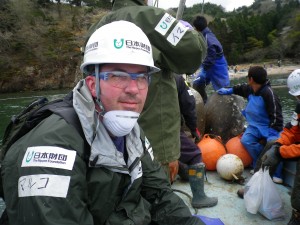
Mark Flanigan volunteering with local fisherman for tsunami relief during Golden Week in Oshika Hanto, Ishinomaki, 2011.
By Shirley Dang (Yamanashi-ken, 2009-10) for JQ magazine. Shirley enjoys sipping chai latte and devouring scrumptious cakes while continuing her pursuit for Japanese- and education-related jobs. Visit her Facebook page here.
Mark Flanigan (Nagasaki-ken, 2000-04) currently lives on the campus of International Christian University (ICU) / 国際基督教大学 in Tokyo, where he is finishing up his two-year M.A. in peace studies as a Rotary International Peace Fellow. Last year he volunteered at Ishinomaki post-3/11, playing a vital role in tsunami relief. Following graduation, Mark will move to New York City in July to work as a new program director with the Japan ICU Foundation (JICUF). JQ recently caught up with him to learn more about his extraordinary experiences.
Hi, Mark, welcome to the Big Apple! What’s your background story and how did it influence you to be a JET?
Thank you, Shirley! I’m glad to have the chance to introduce myself here. Well, I actually came into JET through my interest in teaching, rather than a specific focus on Japan. I wasn’t an Asian studies major in college, and I had never traveled anywhere except Europe and the Americas at that point. My first direct experience with Teaching English as a Foreign Language (TEFL) was spending about a year in Morelia, Mexico, which I really loved. After I returned to the U.S., I taught English at an international school for a while, but I wanted to experience the feeling of living in a different culture again. That led me to apply to JET, and I was lucky to have some great advice and support from both Japanese people and JET alumni living in D.C. I still remember how happy I felt when I received the acceptance letter in the mail!
What was your time on JET like, and how did it play a role in your future career plans?
My original plan, like many JETs, was to stay just one year. I had applied to grad school and thought I would finish up with my original contract. Needless to say, I became quite fascinated with the people and culture I found as a municipal ALT in Hirado, Nagasaki Prefecture, and decided to re-contract. I was then offered a promotion of sorts, and became the Teacher-Trainer ALT at the Prefectural Education Center, which was a great experience. In my last year, I also served in tandem with my other duties as the Nagasaki Prefectural ALT Advisor. In all, I ended up staying in Nagasaki for a total of four years! After that, I returned to D.C. and attended grad school in Public Policy at George Mason University. I was selected as a Presidential Management Fellow and worked for the U.S. government until 2010.
I see that you were a Rotary Peace Fellow at the ICU in Tokyo—how did that happen? And as a fellow, what were your roles and responsibilities? Anything you want to share?
I was very fortunate to have met Daniel Sturgeon (Gifu-ken, 2000-02), a JET alumnus and former Rotary Peace Fellow, in Washington. He and I shared many similar interests regarding public service and international exchange, and he strongly encouraged me to pursue the Rotary Peace Fellowship. As ICU in Tokyo is one of the partner universities with Rotary for administering the Peace Fellowship, it was a perfect way for me to return once more to Japan.
Daniel was absolutely instrumental in helping me prepare for the application and selection process, which is certainly rigorous, but very much worth the time and effort. In two years, I was able to graduate with a fully-funded M.A. in Peace Studies, with direct experience interning at the United Nations in Geneva in summer 2011, thanks to the generosity of Rotarians worldwide who enable this outstanding Peace Fellowship program to develop.
I would certainly encourage any former JETs who are interested to review the current application at www.rotary.org/rotarycenters. Being a JET means you have already experienced Japanese culture directly, which is a huge plus with Rotary! You can also find a local Rotary Club for endorsement at www.rotary.org/clublocator. The annual application deadline is coming up, so if you are interested, apply ASAP!

